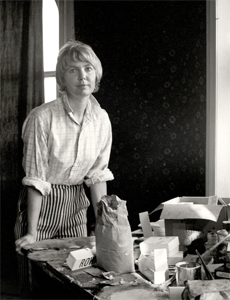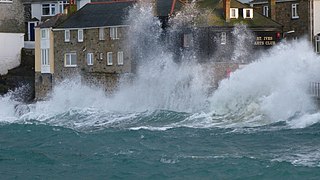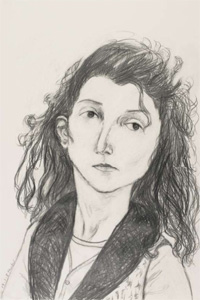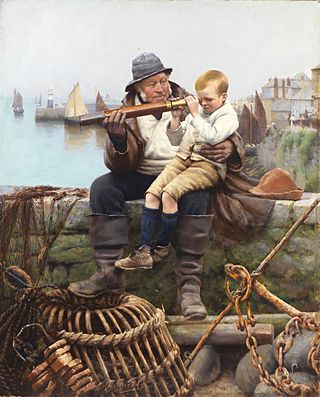St. Ives
St. Ives, is a small coastal town settled in Cornwall, England where most of Hewitt's source of inspiration derived from. It is said that Hewitt was first introduced to St. Ives during a short holiday in 1912, and stayed there until 1954. [7] Many artists moved to St.Ives after the town's bustling sardine market headed into a heavy decline. [6] There were many reasons to blame for this decline: increased absence of silver shoals, a warm current that traveled away from the coast, and or the decrease of the red water that had run through their rivers. [6] The town's industry began to slowly weaken, which lead to the increase of vacancies in pilchard palaces, net-lofts, and workshops of boat builders, coopers and blacksmiths. [6] For artists, these empty spaces were close substitutes to potential studio spaces. [6] Slowly, an art community began to grow in this quaint town, for the arrival of the Great Western Railway improved the town's accessibility and made it easier to transport works to London for exhibitions. [6] Over time, St. Ives eventually morphed into a visiting center for artists from across the world to come and visit regularly. [6]
Life on St Andrews Street
Pauline Hewitt purchased a bungalow that looked right out to St Ives’ harbor. [5] This three story one-bedroom house was her home for forty years. [5]
Hewitt painted many works from her balcony, for the bungalow held views that inspired her and another British painter named Patrick Heron. [5] One painting of Herons', “Harbour Window with Two Figures, St Ives: July 1950”, was greatly inspired by the surroundings of Hewitt's bungalow. [8] Heron stated in a letter dating back in Aprils of 1983, that he adored the property so much that he rented the space every year from 1947 to 1954. [8] He wrote about the "immense sensation" he felt when first entering the space. [8] One famous characteristic of Hewitt's bungalow was the balcony, for it provided a vast and open view of St. Ives harbor. [8] One rare black and white photo shows Hewitt peacefully sitting on her balcony looking out towards the bay, accompanied with a canvas in front of her. [5] Hewitt's life was mostly situated in St. Ives for the town's scenes inspired her and neighboring artists in creating many coastal and natural scenes. [4] The ultimate reason she departed from St.Ives was in order spend her last years with her son in Surrey. [3]









